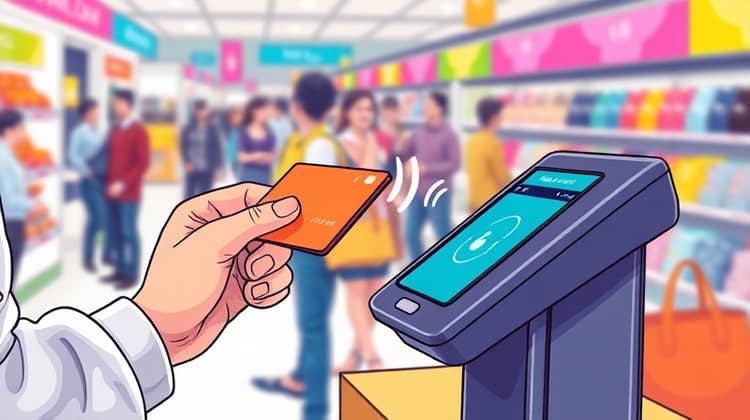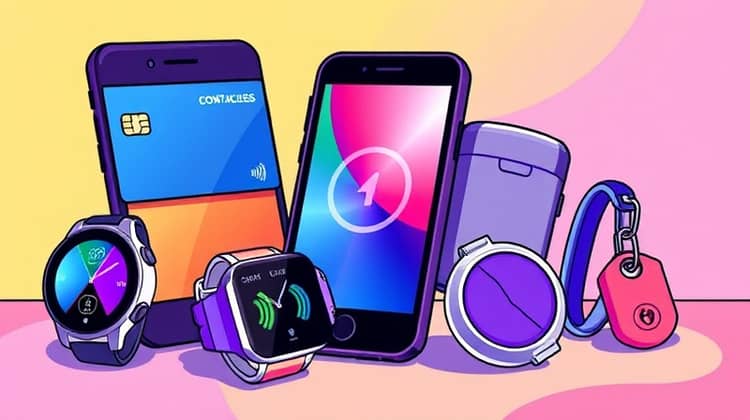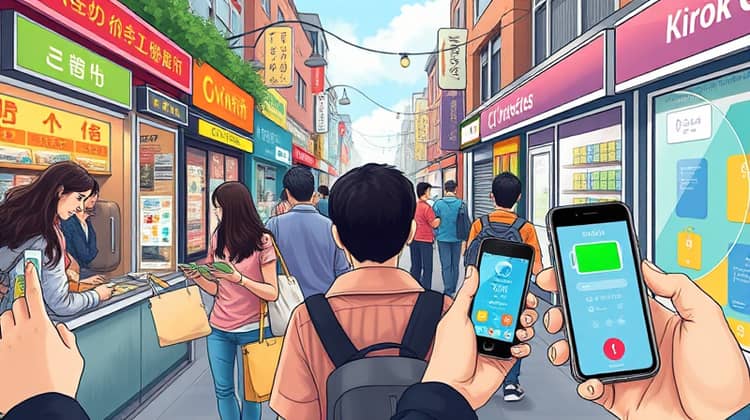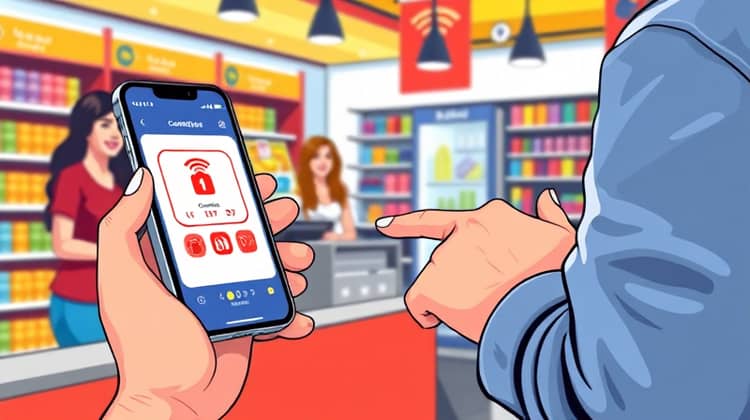Contactless Payments: Convenient and Secure – Here's What You Need to Know

In today's fast-paced world, convenience is paramount. Among the many technological advancements, contactless payments have emerged as a popular method for completing transactions efficiently and securely. This innovative payment option allows customers to make payments without the need for physical contact with payment terminals, providing a seamless shopping experience.
The surge in the adoption of contactless payments has reshaped how people handle their finances, especially in a post-pandemic world where hygiene and safety are top priorities. With just a tap of a card or mobile device, purchasers can quickly complete transactions, avoiding long lines and lengthy checkout processes.
However, while contactless payments provide numerous advantages, many customers still have concerns regarding their security, usability, and the overall impact on their shopping experience. Understanding these facets can help consumers feel more informed and confident as they navigate the evolving world of financial transactions.
What are Contactless Payments?

Contactless payments refer to transactions made by simply tapping a card or using a mobile device equipped with near-field communication (NFC) technology. This method eliminates the need to physically swipe, insert, or enter a PIN for most standard transactions, making it remarkably convenient for everyday purchases.
Gaining traction across the globe, contactless payments have transformed the landscape of point-of-sale (POS) transactions, allowing consumers to complete payments in mere seconds. This payment option is widely accepted at retail stores, restaurants, public transportation, and various service points, enhancing ease and speed in financial transactions.
The technology behind contactless payments enables encrypted data transfer, which keeps consumers' financial information secure while ensuring swift checkouts. As more merchants adopt this payment method, it is becoming a standard expectation for a growing number of consumers.
How Do Contactless Payments Work?

Contactless payments harness the power of NFC technology, allowing devices to communicate with payment terminals within close proximity.
- The consumer holds their contactless card or mobile device near the payment terminal.
- The terminal detects the NFC signal and creates a secure connection.
- Transaction data, including encrypted payment information, is transmitted almost instantly.
- The terminal confirms the transaction success and processing is complete.
- The consumer receives a confirmation (often a receipt) for their records.
This rapid and straightforward process is one of the key reasons why contactless payments have become so popular among consumers today. The need for speed and convenience is paramount, especially in busy environments where customers are looking to make quick purchases without delays.
As mobile wallets and contactless cards become more common, an increasing number of merchants are investing in the infrastructure required to accept these types of payments. This trend indicates that the reliance on cash and traditional credit/debit card payments may decline further in the years to come.
What Devices Can Make Contactless Payments?

A variety of devices are capable of making contactless payments, making it easier than ever for consumers to take advantage of this technology.
- Contactless credit and debit cards
- Smartphones with mobile wallet applications
- Wearable devices, such as smartwatches
- Contactless-enabled payment fobs or keychains
The flexibility in device options is one of the driving factors for the growing popularity of contactless payments. With many consumers already carrying smartphones, it becomes a natural step to utilize them for convenient payment processing as well. This reduces the need to carry multiple cards or devices and helps streamline the payment experience.
Moreover, as more retailers integrate contactless payment systems into their operations, the number of devices that can support such transactions continues to expand. This trend shows no signs of slowing down, and it is likely that we will see even more innovative payment solutions in the future.
Are Contactless Payments Secure?

Security is a primary concern for anyone considering using contactless payments. Many potential users may wonder how safe their financial information is when using such an innovative payment technology. Overall, contactless payments are designed with heavy financial security measures to protect consumers from fraud during their transactions.
Payments made via NFC technology are encrypted and transferred securely between devices, making unauthorized access difficult. Each transaction generates a unique code, ensuring that even if someone intercepts the data, it would be useless for future payments.
- Encryption of transaction data
- Dynamic transaction codes for each use
- Limited transaction amounts for added security
- Use of biometric authentication in mobile wallets
Despite these security features, it is important for users to remain vigilant and take precautions while making contactless payments. Regular monitoring of bank statements and reports of any suspicious activity can further reinforce protection against fraud.
While concerns over security are valid, the consensus among experts is that contactless payments are relatively safe when compared to traditional magnetic stripe transactions, which are more susceptible to skimming and data theft.
What Are the Benefits of Contactless Payments?

Contactless payments bring forth numerous advantages to consumers and businesses alike. Not only do they save time during transactions, but they also promote a more hygienic approach to payments, especially in light of recent events prioritizing health and safety.
As more individuals embrace this payment method, its benefits have become increasingly apparent, making it a preferred choice for various consumers and businesses.
- Faster transaction times
- Enhanced convenience and ease of use
- Improved hygiene, reducing physical contact
- Increased security features compared to traditional methods
The overall convenience provided by contactless payments aligns with consumers' expectations in today's fast-paced world. As customers continue to look for effortless shopping experiences that match their lifestyles, the demand for contactless payment options is likely to continue growing.
Moreover, businesses are increasingly adopting contactless payment technology to better serve their customers, further enhancing loyalty and satisfaction in the marketplace.
Are There Any Drawbacks to Contactless Payments?

While contactless payments offer many conveniences, they are not without some potential limitations. One of the main concerns is that some consumers may not have access to this technology, especially those in areas where merchants have not yet adopted contactless payment systems.
- Limited acceptance at all merchants
- Possible transaction limits for small purchases
- Reliance on technology and device battery life
- Potential for lost or stolen devices used for payments
Additionally, while security measures have been implemented, there are still concerns about unauthorized charges in the event of a lost card or device. Users must take extra steps to secure their devices and inform their banks if anything goes awry.
In summary, while the advantages of contactless payments are evident, potential users should remain cognizant of these drawbacks to make informed decisions regarding their payment methods.
How to Set Up Contactless Payments

Setting up contactless payments can be a straightforward process, particularly if you are already using a contactless-enabled card or smartphone. To get started, users first need to ensure that their payment method is compatible with contactless transactions.
Once you confirm compatibility, the following steps can help you set up your contactless payments.
- Check if your card or mobile wallet supports contactless payments.
- Enable contactless payment settings within your mobile device wallet.
- Link your bank account or add funds to your payment app if necessary.
- Test the functionality at a contactless-enabled terminal to ensure it's working.
Once you have completed these steps, you should be ready to start using contactless payments conveniently and securely at various locations. With a little practice, you can quickly adapt to this new payment method and seamlessly integrate it into your shopping routine.
Tips for Using Contactless Payments Safely

To maximize the security of your contactless payments, it is essential to follow safe practices that can help you protect your financial information. As with any technology, awareness and caution are key components in ensuring a safe transaction environment.
Here are some practical tips for using contactless payments without compromising your security.
- Always keep your contactless cards or devices in a secure place.
- Regularly monitor your bank account statements for unauthorized transactions.
- If your card or device is lost or stolen, report it to your bank immediately.
- Be mindful of where you make contactless transactions, avoiding suspicious locations.
By staying alert and implementing these security measures, you can better safeguard your financial information while enjoying the benefits of contactless payments.
Ultimately, being proactive is a central component of using modern payment options securely, allowing consumers to feel more comfortable during their transactions.
Conclusion

In conclusion, contactless payments represent a significant advancement in how consumers engage with their finances, emphasizing convenience, speed, and security. As this technology continues to evolve, it is becoming increasingly essential for both consumers and merchants alike to understand how to effectively use it.
By being informed and applying best practices, users can enjoy a rewarding payment experience while minimizing potential risks.






